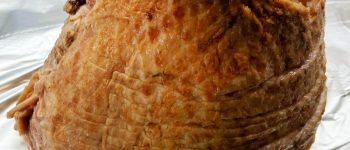Boudin, a delicious and flavorful sausage, can be a bit tricky to cook. Its delicate casing has a tendency to explode if not cooked properly. But fear not! In this article, we will guide you through the steps to cook boudin without any mishaps. Get ready to enjoy the perfect boudin every time!
To cook boudin without it exploding, follow these simple steps:
Fill a Pot with Water
Start by filling a pot with water. Make sure you have enough water to fully submerge the boudin links.
Heat the Water until Boiling
Bring the water to a rolling boil. The hot water will ensure that the boudin cooks evenly without bursting the casing.
Turn the Water Down to a Simmer
Reduce the heat to a gentle simmer once the water has reached boiling point. This will help maintain the integrity of the casing and prevent it from bursting.
Submerge Boudin Links into Water
Carefully place the boudin links into the simmering water. Allow them to cook for about 10-15 minutes or until fully cooked and no longer pink in the middle.
Remove and Let Cool Before Cutting
Once cooked, remove the boudin from the water and let it cool down before cutting into it. This will prevent the casing from bursting due to the pressure of the knife.
Cooking boudin properly is not only a way to save time and hassle but also ensures a delicious and satisfying meal. Now that you know the secret to cooking boudin without it exploding, let’s answer some commonly asked questions about this delectable sausage.
How Do I Prevent Boudin Casings from Bursting?
Boudin casings are naturally thin and delicate. When heated at high temperatures, the pressure inside the casing can build up and cause it to burst. To prevent this, follow these tips:
- Poach the boudin by filling a pot with hot water and bringing it to a boil. Then, reduce the heat to a simmer before submerging the boudin links.
- Avoid cooking the boudin on high heat, as it can cause the casing to burst. Simmering it gently will help the casing stay intact.
Remember, taking the time to cook boudin properly will yield delightful results!
Are There Other Ways to Cook Boudin?
While poaching is a common cooking method for boudin, there are other ways to prepare this delicious sausage:
Microwave
Place the boudin links on a microwavable plate, making sure not to overcrowd them. Cook for 2-3 minutes, flip them over, and cook for another minute or two. Check the internal temperature to ensure it reaches 160°F.
Oven
Preheat your oven to 300°F and place the boudin links on an oiled baking sheet. Cook for 20-25 minutes, flipping them every 5 minutes. Check the internal temperature to ensure it reaches 160°F.
Steamer
If you have a steamer pot, fill it with 2 inches of water and place the boudin links in the steamer. Cook on high for 3-5 minutes, then reduce the steamer to a low or warm setting and cook for another 10-15 minutes. Check the internal temperature to ensure it reaches 160°F.
Grill
Prepare your grill to medium-high heat and place the boudin links directly onto the grate. Cook for 4-5 minutes, flipping them once. Check the internal temperature to ensure it reaches 160°F.
No matter which cooking method you choose, always check the internal temperature to ensure it reaches 160°F for safe consumption.
Do You Eat the Casing on Boudin?
Yes, the casing on boudin is edible and adds texture to the links. It also helps to keep the link together while it cooks and maintains moisture in the sausage. However, if you prefer not to eat the casing, you can remove it after cooking. Remember, searing or grilling the boudin links can give a nice crispness to the outside of the sausage, making it more enjoyable to eat with the casing.
Final Thoughts
Boudin is a versatile and delicious dish that can be enjoyed in various ways. Whether you choose to poach, microwave, oven bake, steam, or grill your boudin, the key is to cook it properly and ensure the internal temperature reaches 160°F. The result will be a delightful sausage bursting with flavor. Don’t be afraid to experiment with different cooking methods and enjoy boudin with your favorite sides or as an appetizer. Try it out, and you’ll discover why boudin is truly a culinary delight!
Made it to the end? If you found this article helpful, check out other informative articles on our website Ekilove. Happy cooking!



